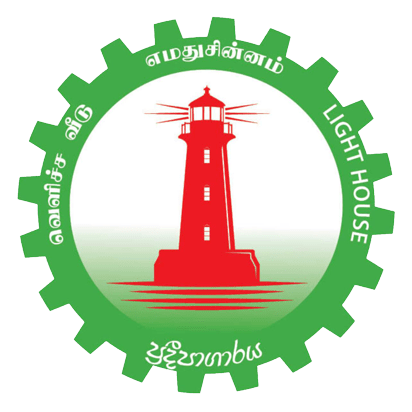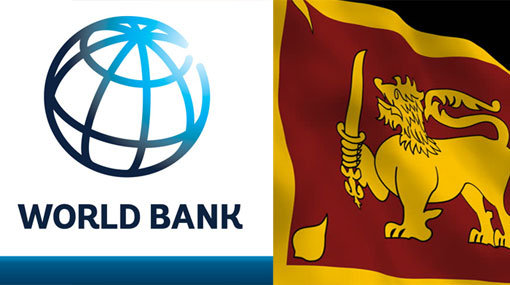Sri Lanka’s government debt as a share of gross domestic product is expected to rise to 115 percent in 2021 and poverty to 10.9 percent, the World Bank said in the wake of several years of mostly monetary ‘stimulus’ followed by the inevitable stabilization policies.
Import controls would reduce growth, while high debt and reduced access to markets were threatening debt sustainability, the agency said in a report on South Asia.
Sri Lanka’s economy is expected to recover to 3.6 percent in 2021, from a 3.6 percent contraction in 2020 amid a Coronavirus shock.
Sri Lanka public and publicly guaranteed debt is estimated to have risen to 109.7 percent of GDP in 2020 from 94.3 percent in 2019 and is expected to rise to 115.0 percent in 2021 and 117.7 percent in 2021.
Lower-middle-income-poverty defined as 3.2 dollars in 2011 PPP dollars had jumped to 11.7 percent in 2020 from 9.2 percent and will moderate to 10.9 percent in 2021 as growth recovers.
Fiscal Hit
In 2020 Sri Lanka’s budget deficit is expected to have worsened to 12.6 percent of GDP from 6.8 percent of GDP in 2019 due to the combined effect of a Coronavirus pandemic and tax cuts for a ‘fiscal stimulus’.
“The fiscal deficit is expected to be high in the forecast period, despite tightly controlled expenditures, as revenue collection is expected to remain weak,” the World Bank said.
“The combination of a stimulus package in 2019 (pre-pandemic) and low revenues in the aftermath of the COVID-19 shock resulted in a steep deterioration in fiscal balances.
“The deficit is believed to have increased to 12.6 percent of GDP in 2020 and public and publicly guaranteed debt to have increased to 109.7 percent of GDP.
“In turn, public and publicly guaranteed debt is expected to reach 115.0 percent of GDP in 2021 and to rise further between 2022-2023. High gross financing requirements will exert pressure on the domestic financial market”
In 2020 Sri Lanka’s central bank has bought large volumes of debt, injecting liquidity and triggering forex reserve losses, which has mopped up most of the liquidity, though private credit has been weak.
The World Bank is expecting inflation to rise to 5.2 percent in 2021 from 4.6 percent in 2020.
“Inflation is projected to increase gradually, as domestic banking institutions, including the central bank, are contributing to finance the government deficit,” the World Bank said.
Sri Lanka’s central bank has been printing unprecedented volumes of money in 2020 and in the first two months of 2021, ratcheting up liquidity injections that brought currency crises in 2012, 2015 and 2018 to new levels under so-called ‘Modern Monetary Theory’ despite running a pegged exchange rate regime.
The rupee has collapsed from 113 to 200 to the US dollar from 2011 under monetary ‘stimulus’.
Return of John Law
Monetary stimulus, broadly dating back to Scottish Mercantilist John Law, gained sudden respectability among policymakers after the ‘Great Recession’ as reserve currency central banks injected large volumes of money into damaged credit systems, seemingly without driving up inflation.
Such policies also known as ‘Go’ policies whether accompanied with deficit spending or not, has historically triggered balance of payments troubles in pegged regimes and asset price bubbles and commodity price booms in floating reserve currency areas followed by low growth critics say.
Sri Lanka’s growth has also fallen as monetary stability worsened and policy makers directed most of their efforts to firefighting the effects of ‘stimulus’ including rate hikes, import controls (Nixon shock) and exchange controls.
Since around 2016 Sri Lanka was also hit by ‘revenue based fiscal consolidation’ a peculiarly leftist or statist framework advocated by the International Monetary Fund that sought to put more money into the hands of politicians and bureaucrats with tax hikes while downplaying the need to cut spending.
No emphasis was placed on monetary stability or restraining the central bank either.
Instead the central bank was encouraged to follow un-anchored monetary policy in the form of a ‘flexible’ exchange rate (no credible external anchor) and ‘flexible’ inflation targeting (no credible domestic anchor) with predictable results.
The central bank was also taught to calculate an ‘output gap’ inciting an agency which had already deprecated the currency from 4.70 to 113 since its inception in the worst performance in South Asia, to follow ‘Go’ policies and trigger external imbalances.
However the agency has no growth mandated in its constitution.
Sri Lanka’s central bank is a top IMF customer due to past anchor conflicts and keeping down interest rates as a final target, critics have said.
In 2018 Sri Lanka cut rates and injected money through a variety of tools, including outright purchases of bonds, term reverse repo injections and overnight injections and dollar rupee swaps (buy/sells) amid tax hikes to reduce the deficit.
The injections pushed the rupee down from 153 to 182 before rates were raised at liquidity tightened in ‘Stop’ policies, leading to a growth shock.
Sri Lanka’s began another round of ‘Go’ policies from August 2019, and in December 2019 value added taxes were slashed worsening budgets again. Rates were cut in 2020 and injections worsened from around March 2020.
Debt Sustaintability
Sri Lanka is still the ‘Go’ mode. Gross official reserves which were at 8.5 billion US dollars when ‘Go’ policies and output gap targeting started have fallen to 4.5 billion US dollars by February 2021.
With liquidity injections and prospects of a private credit recovery, analysts had warned that Sri Lanka would find it difficult to repay foreign debt, which requires a government to have solvency in domestic debt auctions and there was a danger of a Weimar Republic phenomenon.
Meanwhile the World Bank said annual debt payments were around 4 billion US dollars and access to foreign markets have been limited amid downgrades.
“External buffers are expected to weaken relative to external liabilities as reserves may need to be used to service the external debt,” the World Bank said.
“A longer downturn could push many small and medium enterprises from illiquidity to insolvency, further holding back the recovery process and the return to a path of poverty reduction.
“Lower growth would also put additional strain on public finances and increase
risks to macroeconomic stability.
“Depleted fiscal buffers, high indebtedness, and constrained market access will continue to pose risks to debt sustainability.”


